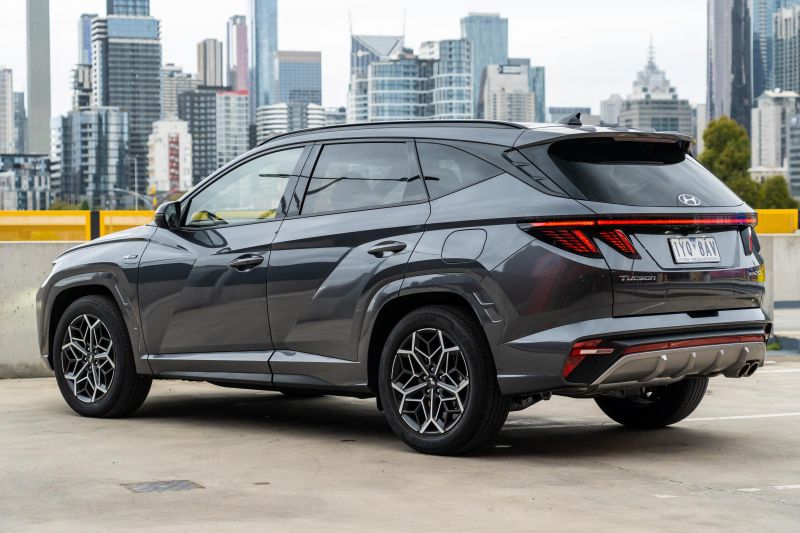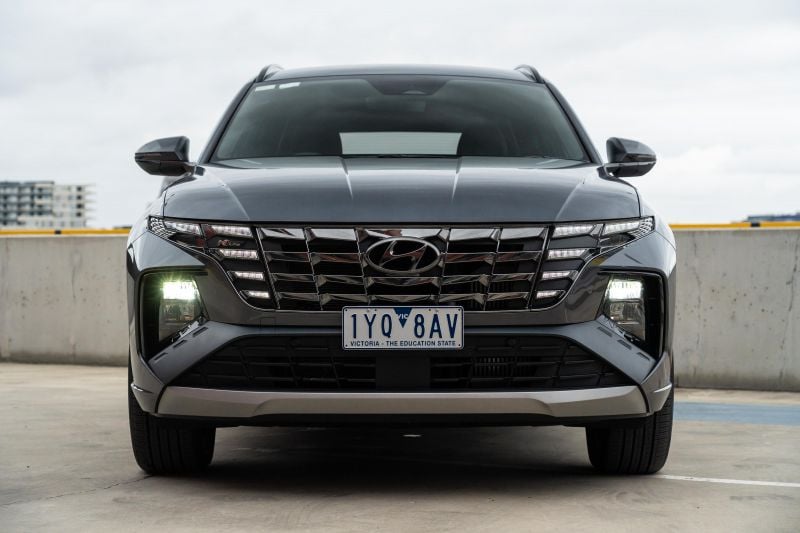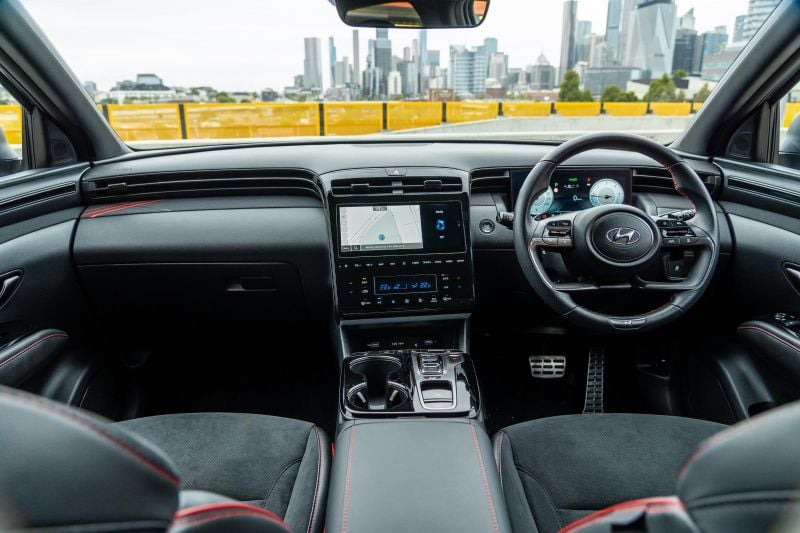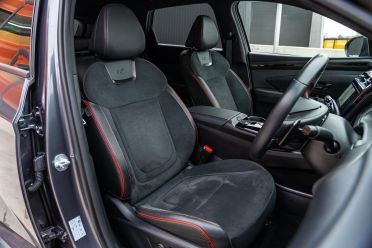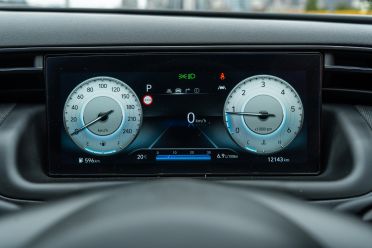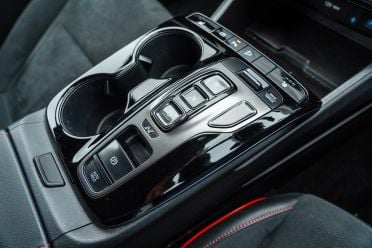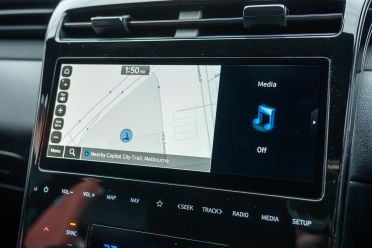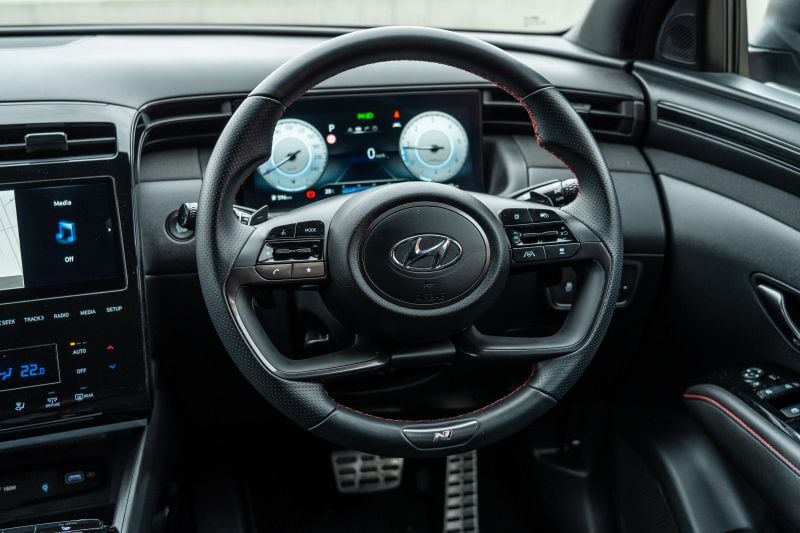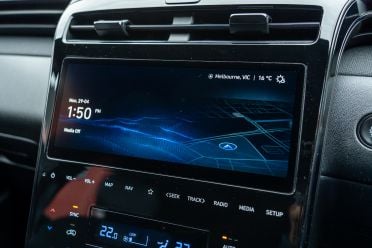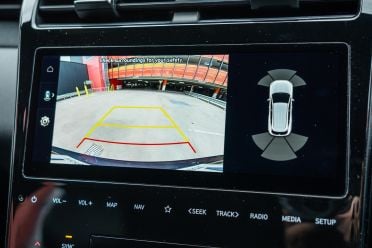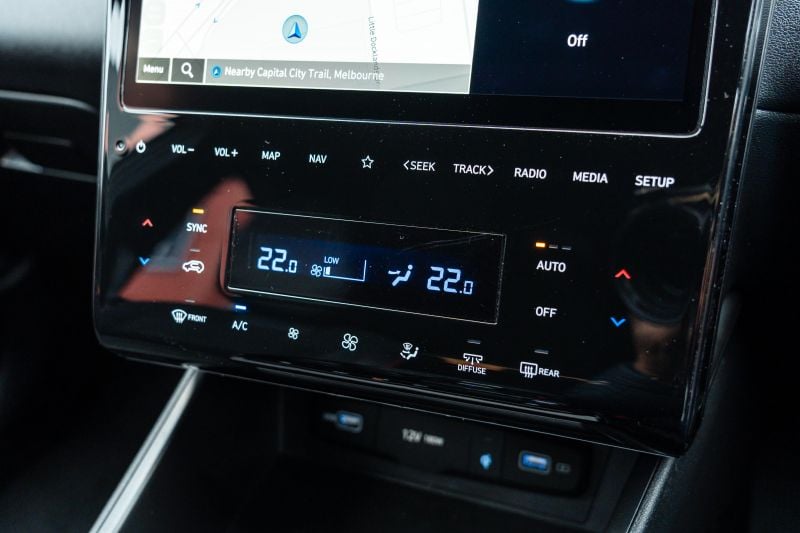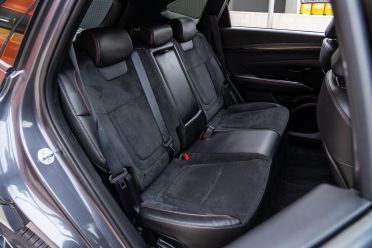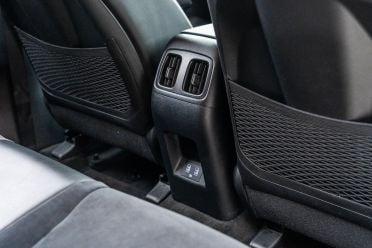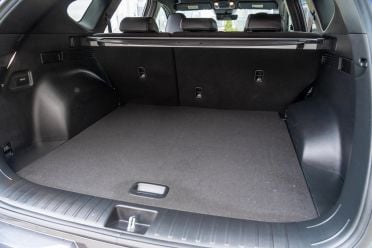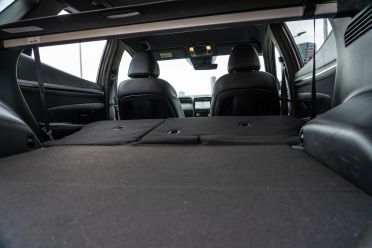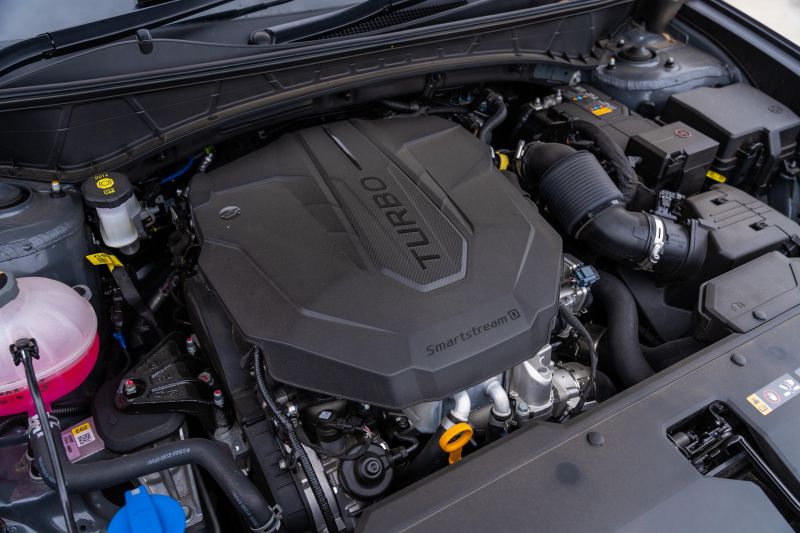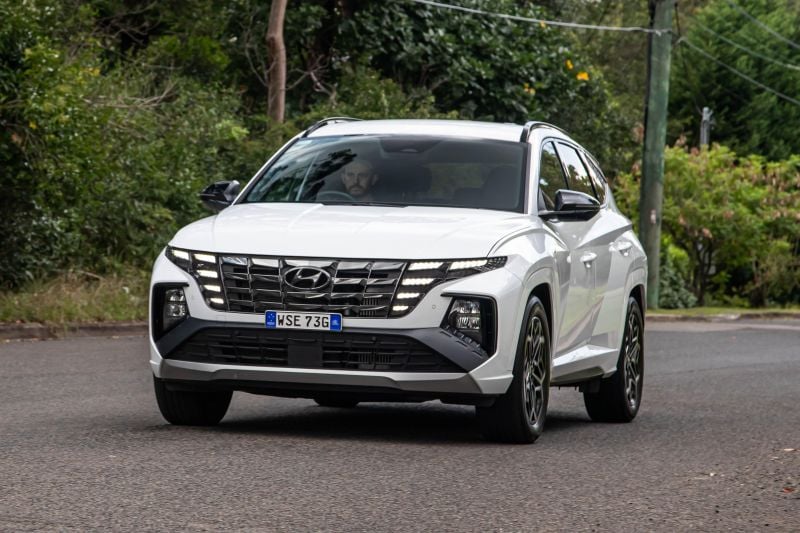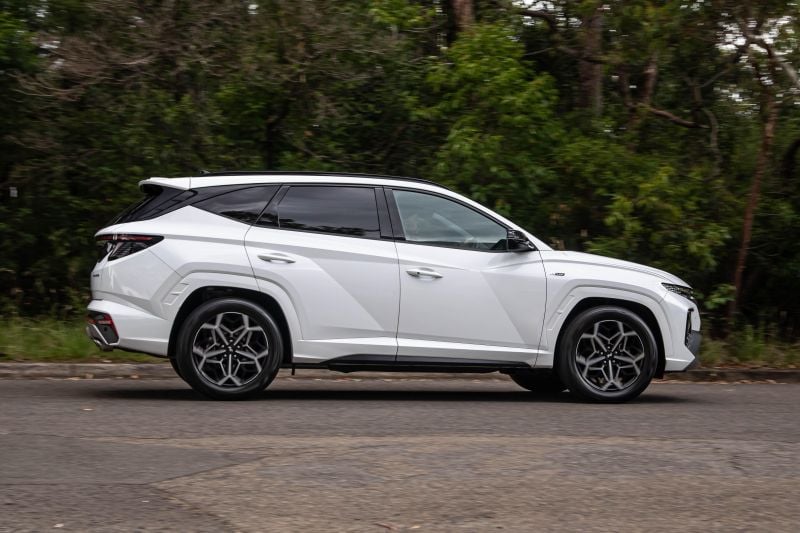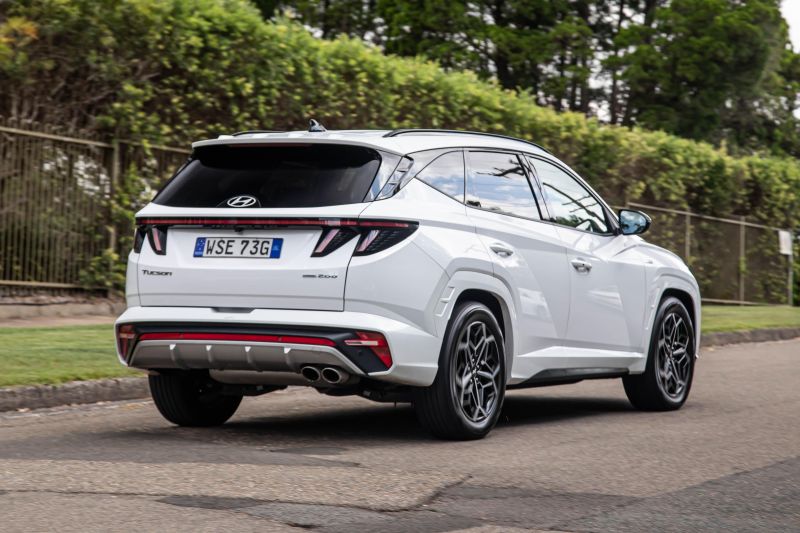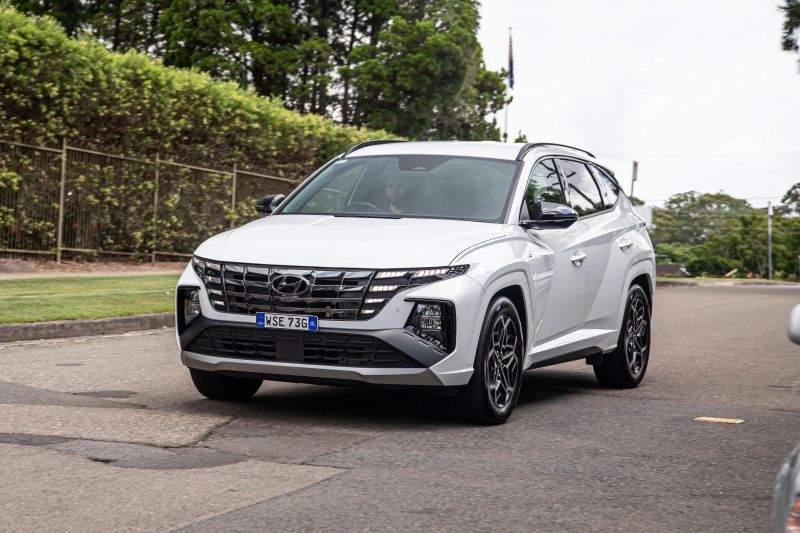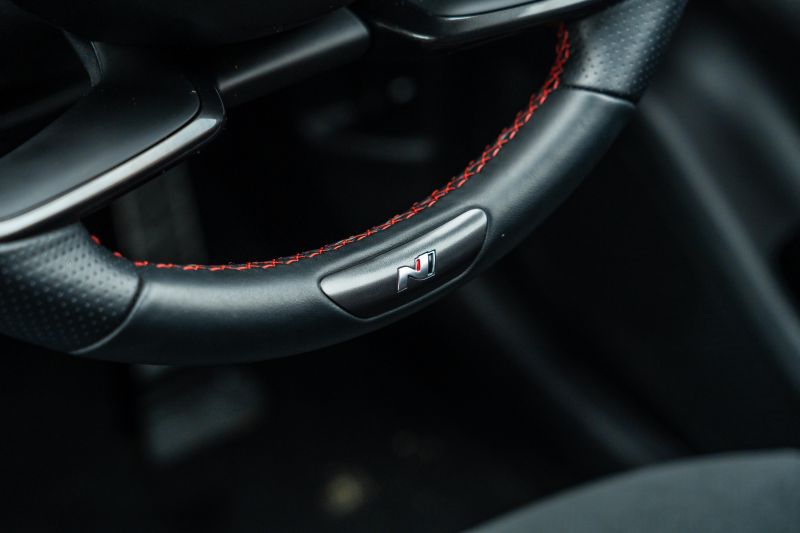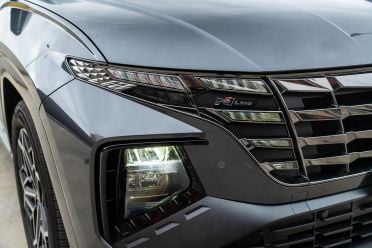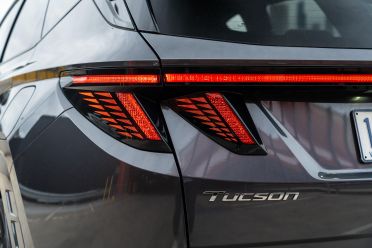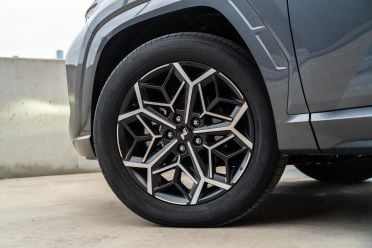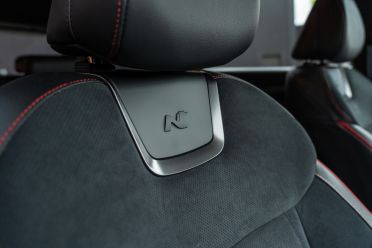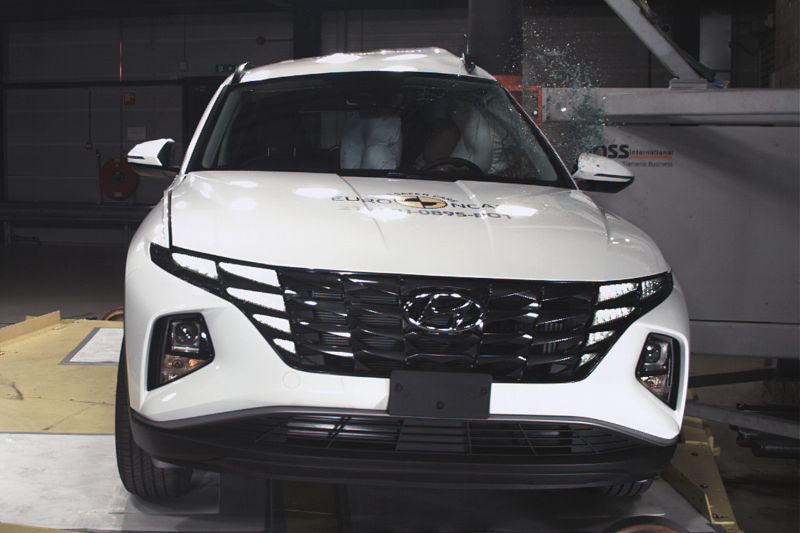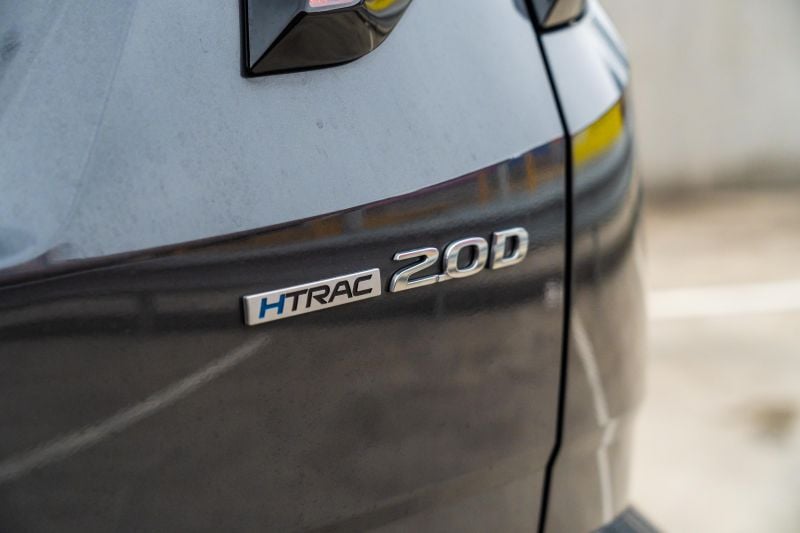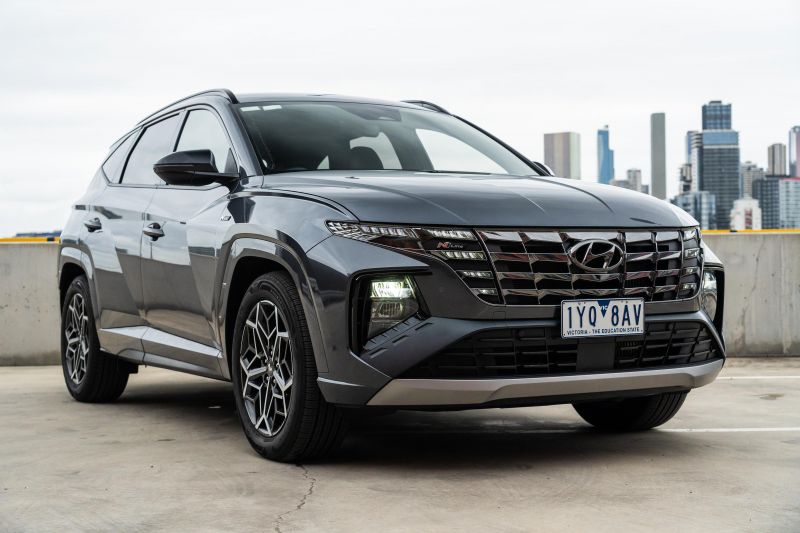Hyundai has offered a turbo-diesel powertrain in its popular Tucson mid-size SUV offering for well over 10 years now, but that’s coming to an end this year.
An update to the Tucson is touching down locally soon. It brings a raft of changes, notably including the axing of the torquey 2.0-litre four-cylinder turbo-diesel engine option.
This follows a wider market change with carmakers ditching diesels for efficient petrol and hybrid options. Mid-size examples from recent history include the Mazda CX-5, Peugeot 3008, SsangYong Korando and Volkswagen Tiguan.
For now however Hyundai is still offering Tucsons with a diesel. In fact, the company is currently offering a $750 factory bonus on all examples, regardless of the powertrain, built before February 2024.
Hyundai currently offers the 2.0-litre turbo-diesel on a number of variants, including this mid-spec Elite on test here. Our tester was also fitted with the optional N Line Package which dials up the sporty looks but doesn’t bring any extra power.
Should you snap up a current Tucson now or are you better waiting for the updated model? Read along to find out.

How much does the Hyundai Tucson cost?
The 2024 Hyundai Tucson is available in three different trim levels and can all be optioned with the N Line Package. On test here is the mid-spec Tucson Elite AWD diesel with the N Line option.
Our tester’s optional N Line Package cost $2500, bringing the as-tested price to $49,150 before on-roads.
2024 Hyundai Tucson pricing:
- 2024 Hyundai Tucson 2.0 FWD: $35,650
- 2024 Hyundai Tucson Elite 2.0 FWD: $40,650
- 2024 Hyundai Tucson Elite 1.6T AWD: $44,650
- 2024 Hyundai Tucson Highlander 2.0 FWD: $46,150
- 2024 Hyundai Tucson Elite 2.0TD AWD: $46,650
- 2024 Hyundai Tucson Highlander 2.0 FWD w/ sunroof: $47,650
- 2024 Hyundai Tucson Highlander 1.6T AWD: $50,150
- 2024 Hyundai Tucson Highlander 2.0TD AWD: $52,150
- 2024 Hyundai Tucson Highlander 1.6T AWD w/ sunroof: $51,650
- 2024 Hyundai Tucson Highlander 2.0TD AWD w/sunroof: $53,650
Prices are before on-road costs
To see how the Tucson compares with its rivals, use our comparison tool.
What is the Hyundai Tucson like on the inside?
Walking up you cop an eyeful of the sporty-looking N Line bodykit which you’ll either love or hate. I personally don’t mind it, as the wheel arch covers are painted rather than being black plastic.
At night the side mirrors whir into place when you approach the car and there’s a small light that illuminates inside the door handle. It’s a neat touch that makes the handle easier to find.
Due to the raised height you pivot into the Tucson rather than stepping up or down, which is synonymous with crossover SUVs. This is something that could be very useful for those with limited mobility.
Once inside, the driving position is perched nice and high, allowing you to have a clear and commanding view of the road ahead. It may be too high for some, but this is why some people buy an SUV compared to a low-riding sedan or wagon.
The N Line Package on the inside gets you features like sporty front seats with leather and suede upholstery, a sporty steering wheel, metal pedals, and a black headliner, among others. It goes a long way to make the Tucson feel darker and more menacing.
The driver’s seat offers 10 ways of electric adjustment, including plenty of adjustable thigh support which is nice for those with longer legs like myself. The front passenger seat on the other hand is completely manually adjusted which is common for the segment at this price point.
Both the front seats are really comfortable and supportive. The suede sections make you stick more than slippery leather or leatherette does, which makes you feel locked in. They’re also heated, which got a proper workout on chilly Melbourne mornings.
One of the few gripes I have about the front seats is the headrest in its default lowered position sticks out too much, though you can fix this by pushing it up higher and reclining the backrest a touch.
The Tucson’s sporty leather-wrapped steering wheel feels nice in the hand and is a good size. It isn’t heated in the Elite; you need to step up to the top-spec Highlander to get this feature.
All the buttons on the wheel are logically placed and feel familiar if you’ve driven a recent Hyundai. Some of the buttons have a glossy black finish which got grubby after a bit of use.
Behind the steering wheel is a 10.25-inch digital instrument cluster that’s common in a wide range of current Hyundai vehicles. It doesn’t have a cowl like some models, but it’s bright enough to limit the amount of reflections and glare.
The screen itself is high-resolution and has a number of configurations allowing you to display the content you’d like. I do wish there were more page layouts that displayed a digital speedometer, as well as smartphone mirroring navigation.
The centre stack is started to look a little dated and tacky now in 2024. I’ve never really been a fan of this setup, but thankfully this is one the key changes coming with the mid-life update.
The current model has a 10.25-inch touchscreen infotainment system that’s wide but isn’t very tall, making it look a bit like a letterbox opening. Like the instrument cluster, the touchscreen is still high-resolution. It’s also very reactive to touch, making it easy to navigate menus and scroll through lists.
Apple CarPlay and Android Auto continue to only be offered in wired form with the 10.25-inch touchscreen. You’re required to plug your phone in to a USB-A port located at the front of the centre console.
With my iPhone 15 Pro Max plugged in I didn’t experience any dropouts, which is to be expected. The only catch was it’s hard to slot a plus-sized phone into the nook at the front of the centre console without mangling your cable.
In that same nook there’s a wireless charger which didn’t have a big enough ledge to properly hold a phone if you brake or accelerate a bit too hard.
The touchscreen infotainment system comes with an in-built satellite navigation which is helpful if you haven’t got any phone service and still need to make your way home.
Under the touchscreen, I’m still not a big fan of the touch-sensitive setup for the dual-zone climate control. It’s on a large piano black panel that got really smudged and grubby after a few days.
There are plenty of other piano black finishes, including the centre tunnel and a part of the door armrests, which blows my mind as these are some of the most frequently touched areas of the car.
There are also far too many hard plastics for a mid-sized SUV at this price point. Thankfully there are some softer finishes on the armrests and a portion of the dashboard, but I expected better. Hopefully this is addressed with the update.
You’ll either love or hate the black headliner that comes when you opt for the N Line option package. I personally don’t mind it as it makes the subtle red highlights pop.
A push-button gear selector comes as standard. It looks interesting, but ultimately I don’t like how you interact with it. I found I kept accidentally shifting into neutral when parking, which made me have to take my eyes off the road to look where I need to press.
There’s an adequate amount of storage up front in the Tucson, including two cupholders, sizeable door cubbies, as well as a decently sized centre console box and glove box.
The second row of the Tucson is where the benefits of Hyundai Australia opting for the longer-wheelbase model (not the smaller European option) are most noticeable.
At a leggy 182cm I had palatial amounts of leg-, head-, shoulder-, and toe-space in the second row behind my driving position. I can see why these kind of vehicles are so popular with families. The rear bench also reclines a bit which makes sitting back there even more comfortable for longer trips.
Second-row amenities include air vents on the back of the centre console, USB-A ports, as well as a fold-down armrest with cupholders. There are also the requisite outboard ISOFIX points and three top-tether points.
At the back, the Tucson Elite comes standard with a manual tailgate which is disappointing but common for the segment at this price.
Once the boot is open there is a huge amount of space – Hyundai claims an official 539L boot capacity figure which expands to 1860L with the rear seats folded.
There really aren’t many frills in the boot besides pull tags to operate the 60/40 split-folding rear seats and a 12V socket.
Under the boot floor is a full-size spare wheel which is critical for those who frequently drive in rural and regional areas.
What’s under the bonnet?
The 2024 Hyundai Tucson is currently offered with two petrols and a diesel powertrain. On test here is the latter, though it’s getting the axe with the impending mid-life update.
| Model | Hyundai Tucson 2.0D AWD |
|---|---|
| Engine | 2.0L 4cyl turbo-diesel |
| Power | 137kW (4000rpm) |
| Engine torque | 416Nm (2000-2750rpm) |
| Transmission | 8-speed auto |
| Driven wheels | All-wheel drive |
| Weight | 1773kg (tare) |
| Fuel consumption (claim) | 6.3L/100km |
| Fuel consumption (observed) | 6.9L/100km (320km mixed driving) |
| CO2 (claim) | 163g/km |
| Fuel tank size | 54 litres |
To see how the Tucson compares with its rivals, use our comparison tool.
How does the Hyundai Tucson drive?
Starting the Tucson with the 2.0-litre four-cylinder turbo-diesel engine you’re provided with a muted diesel grumble. It does a good job at disguising any overly agricultural notes.
One of the few times you’re acutely aware the car is powered by a diesel engine is when you’re stopped in traffic and there are slight vibrations emanating from the floor. This is a classic diesel attribute.
Taking off there’s plenty of power and torque which makes everyday driving feel effortless. With peak torque coming on tap from 2000rpm you’ll easily get the jump on other cars at the traffic lights.
Acceleration at lower speeds remains strong, but the car isn’t overly rapid. The engine doesn’t really like to be revved, and prefers to be driven around leisurely where you can lean on the torque.
Unlike the other turbocharged powertrain the Tucson is currently offered with, the turbo-diesel engine is mated to a regular torque-converter automatic transmission with eight gears. They work incredibly well in unison, creating a serene driving experience – there’s no learning curve here.
Gear changes are crisp and precise, plus there are enough gear ratios for the revs to be left as low as possible to reduce fuel consumption. The transmission will happily drop a gear or two and flare the revs if needed to exit a corner, for example.
Something that surprised me about this car is how fuel efficient the turbo-diesel engine is around town. I frequently saw figures lower than 7.0L/100km, even in heavy traffic, which is fantastic in a vehicle this size.
One of the few catches however is there’s no idle stop-start system, which means emissions continue from the exhaust if you’re stationary. This isn’t the best look if you’re doing the school drop off, for example.
The suspension tune at lower speeds is compliant enough, even with the large 19-inch N Line alloy wheels fitted to our tester. It’s a comfort-oriented setup, though thankfully it’s never too floaty over pimply roads.
Harsher hits like speed bumps or potholes aren’t transferred into the cabin too drastically, allowing you to cruise around town happily.
On that point, the steering is nicely weighted, meaning it’s not too light or firm in the normal driving mode. Sport mode does tighten up the steering, but it doesn’t necessarily make the car feel any sportier.
You also have a nice sense what’s happening with the wheels from the steering wheel. This is increasingly uncommon in SUVs that have lighter steering tunes.
Despite being a long-wheelbase model in the global context, the Tucson is still easy to park. As standard our tester comes with front and rear parking sensors, as well as a reversing camera with adequate resolution. It’d be nice to have a surround-view camera but you need to step up to the Highlander for that.
Getting out on the open road is where the turbo-diesel enters its natural habitat. You can build up speed really easily and still have enough oomph to do an overtake if required.
Once you’ve reached highway and freeway speeds the Tucson finds a groove where the revs are kept low and noise is kept to a minimum. This isn’t too much wind noise, nor tyre roar on coarse-chip roads.
At higher speeds the suspension remains really comfortable. Harsher bumps are soaked up nicely bumps nicely, and continuous undulations are settled after one (or occasionally two) motions.
On the safety front, the Tucson’s adaptive cruise control takes a second to properly engage, which is a little frustrating from behind the wheel as the car will slow down momentarily and then flare the revs to get back up to the set speed. Is it too much for the cruise control to start working when you press the set button?
Once it’s activated however you’ll be coasting a long at ease. For the most part the system works really well though there are a few gripes. I did notice it likes to creep up to 4km/h over your set speed before braking to slow down. This could potentially be a little problematic in speed camera-prone Victoria.
To continue the gripe-fest, the lane-keep assist which activates at speeds over 60km/h is very active and jerks at the steering wheel often to keep you in the lane. A lot of times it’s wrong, especially on freeway off-ramps or roadworks.
The lane centring function which you can activate by pressing a button on the steering wheel also isn’t my favourite. It’s best left for use on clearly marked highways and freeways as it can get lost on meandering roads very easily.
Lastly, the Tucson’s N Line package brings LED headlights which are bright and considerably better than the halogen units fitted to the Elite as standard.
They’re particularly handy for those who live in rural and regional areas and need to keep an eye out for wildlife. There are also cornering lights which help illuminate around a corner.
What do you get?
There are three trim levels available. On test here is the mid-spec Elite with the optional N Line Package.
Tuscon highlights:
- 17-inch alloy wheels
- Full-size spare wheel
- Dark chrome front grille
- Roof rails
- Halogen headlights
- LED daytime running lights
- LED side indicators
- Heated and auto-folding side mirrors
- 8-inch touchscreen infotainment system
- 4.2-inch digital instrument cluster
- Wireless Apple CarPlay, Android Auto
- 6-speaker sound system
- Wireless phone charger
- Manual air-conditioning
- Electronic parking brake
- Leather-wrapped steering wheel
- Leather-wrapped gear knob
- Premium cloth dashboard and door centre trim
- Black cloth upholstery
- Power driver’s seat lumbar
Elite adds:
- 18-inch alloy wheels
- Front parking sensors
- Advanced Rear Occupant Alert
- Rear privacy glass
- Rain-sensing window wipers
- Solar control windshield glass
- 10.25-inch touchscreen infotainment system
- Wired Apple CarPlay, Android Auto
- Satellite navigation
- Dual-zone climate control
- Keyless entry with push-button start
- Remote start
- Shift-by-wire gear selector (AWD)
- Paddle shifters (AWD)
- Luggage net
- Black leather upholstery
- Heated front seats
- 10-way power driver’s seat adjustment
The optional N Line package ($2500, Elite) adds:
- 19-inch N Line alloy wheels
- N Line exterior body kit
- N Line front and rear bumpers
- N Line rear spoiler
- Body-coloured cladding
- N Line front grille
- N Line daytime running lights
- LED headlights (Tucson and Elite)
- Auto high-beam (Tucson and Elite)
- LED tail lights with black-tinted lens (Tucson and Elite)
- N Line skid plate
- 10.25-inch digital instrument cluster
- N Line gear knob (FWD)
- Metal pedals
- Leather, suede upholstery
Is the Hyundai Tucson safe?
The Hyundai Tucson received a five-star ANCAP safety rating based on testing conducted of the short-wheelbase European-market model by Euro NCAP in 2021.
It received an adult occupant protection rating of 86 per cent, a child occupant protection rating of 87 per cent, a vulnerable road user protection rating of 66 per cent, and a safety assist rating of 70 per cent.
The Tucson range comes standard with the following safety features:
- Autonomous emergency braking (AEB)
- Pedestrian detection
- Cyclist detection
- Junction assist
- Blind-spot assist
- Safe exit warning
- Rear cross-traffic assist
- Intelligent speed limit assist
- Lane-keep assist
- Lane Following Assist (lane centring)
- Adaptive cruise control with stop/go
- Leading vehicle departure alert
- Reversing camera
- Rear parking sensors
- Rear occupant alert
- Tyre-pressure monitoring
- Front, front-side, and curtain airbags, plus a front-centre airbag
Stepping up higher in the range gets you safety features such as a AEB in reverse, Blind-Spot View Monitor cameras, advanced rear occupant alert, front parking sensors, and surround-view camera, depending on the variant.
How much does the Hyundai Tucson cost to run?
The 2024 Hyundai Tucson is covered by a five-year, unlimited kilometre warranty.
Logbook servicing for the base petrol and the diesel is required every 12 months or 15,000km, whichever comes first. The 1.6-litre turbo petrol requires on the other hand requires servicing every 12 months or 10,000km.
Hyundai currently offers three-, four- and five-year pre-paid service plans for the Tucson. They are priced from $1240, $1790 and $2185 respectively for our diesel tester.
CarExpert’s Take on the Hyundai Tucson
This is the end of an era.
The Hyundai Tucson is firmly the brand’s top-seller and to date the turbo-diesel has long been the pick of the lineup. It delivers a wealth of torque which helps make for a relaxed and effortless driving experience.
It’s sad to see the diesel get the axe given it’s also technically the most fuel-efficient option in the lineup, at least until the new Tucson Hybrid arrives with the mid-life update.
Speaking of the update, a number of my gripes with this car appear to have been fixed. These include the dated interior layout, lack of wireless smartphone mirroring, and the awkward button-style shift-by-wire gear selector.
It will also pick up a frustrating safety feature that defaults to on every time you start the car, despite not being required in Australia, and incessantly beeps and bongs at you. It’s truly infuriating, and it’s becoming more common in new and updated Hyundai-Kia vehicles.
In the meantime I’d say it’s a great time to snatch up a current Tucson because there’s fundamentally nothing wrong with the car. I’d also urge you to consider the diesel engine because it really is a pearler and won’t be around for too much longer.
Click the images for the full gallery
MORE: Buy a Hyundai Tucson
MORE: Everything Hyundai Tucson





